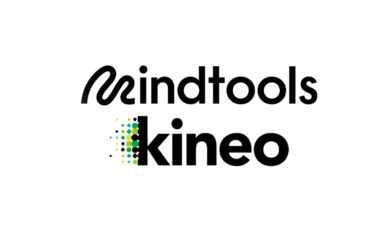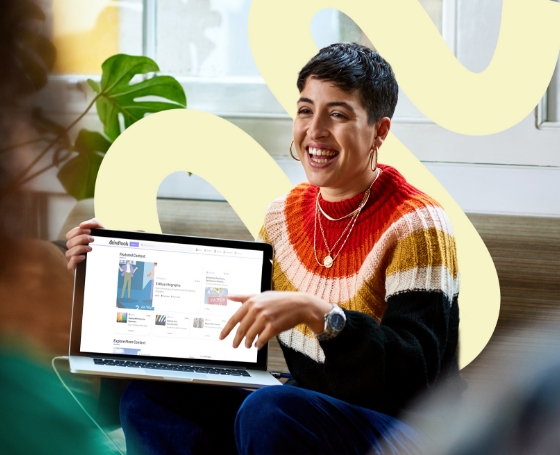“If you change the way you look at things, the things you look at change.” – Wayne Dyer, author and speaker (1940-2015)
About This Week’s Chat
I’ve been training in gyms for many years, and I also worked in the fitness industry for a long time. A few months ago I started training at a new gym.
I knew from the beginning that there was something different about this gym, but I hadn’t yet figured out what it was. I soon realized that the owner had solved some standard gym challenges by thinking differently about how certain things should be done.
One of the problems that gyms face is that people often only train for a week or two after they join and then they leave. It usually happens because they don’t have clear goals or because they feel awkward and uncomfortable working out in front of others.
But, at this gym, the person who signs you up is a professional fitness consultant who helps you to set goals based on a personalized assessment from the day you join. In other gyms, this task is usually left up to a fitness instructor or to the person who joins. The way this fitness consultant helps you to set goals gives you a reason to want to come back every day and it sets you up for long-term success.
When you go to train for the first time, your fitness consultant introduces you to a “fitness marshall,” and he or she makes sure that you meet all the fitness marshalls on duty that day.
The layout of the gym is also different from the norm. There is a central area where the fitness marshalls work from. From this position they can see everyone who enters the gym and they greet everybody by name – yes, really! This means that you don’t feel awkward and strange when you walk into the gym for the first few days, which increases the likelihood of you coming back.
The rest of the equipment is set up around this central area and, from there, the fitness marshalls have control over what happens on the fitness floor. They train clients there and create a fun atmosphere where energy and lots of laughter is at the heart of what happens.
The owner is definitely not a “it’s always been done that way” kind of guy. He’s willing to push the boundaries of what’s usually expected of a gym. With some simple changes, he’s been able to solve a few classical gym challenges and, in the process, he’s helped to improve many people’s health and wellbeing.
One of the ways to problem solve creatively is by being willing to ask questions that challenge how things have always been done. You also have to be willing to look at things without making any assumptions that something will only work if it is done in a certain way.
A great way to challenge your thinking is by asking a hypothetical question or stating an “impossible” challenge as your starting point. How about creating a vacuum cleaner that costs only one dollar? Or shoes that you can fold up and put in your wallet?
How to Problem Solve Creatively
Here are the questions and some of the answers from our Twitter chat.
Q1. What do we mean by creativity in problem solving?
@LorenMargolis Creative problem solving means the opportunity to think and act outside the box, without judgment, to resolve business issues.
@Yolande_MT Solving problems creatively is about looking at “old” problems with “new” eyes.
Q2. Why do we need creativity in problem solving? What benefits does it bring?
@JKatzaman Creativity in problem solving is the best antidote to the status quo. No “this is how we’ve always done it” restraints.
@SayItForwardNow We need creativity in problem solving because solutions to big problems are generally not obvious, or there would be no problem!
Q3. What makes some people more creative than others?
As we see from the responses, creativity can be both an innate or a learned skill.
@thevijaymahajan Openness, a preference for complexity and ambiguity, the ability to extract from chaos, unconventionality, and willingness to take risks.
@MicheleDD_MT Creative people aren’t afraid to challenge the status quo. They are comfortable with risk and moving out of their comfort zone.
@KLC2978 Natural talent! Some people are “open,” see things in a “bigger picture” way, and process information differently to rigid thinkers.
Q4. Which mindsets stimulate the most creative problem solving approaches?
A common theme of being willing to grow and change emerged here.
@Midgie_MT Growth mindset, attitude of curiosity, willing to try and if doesn’t work, try something else. There is no one right answer.
@PG_pmp It requires imaginative and analytical skills to make use of creative problem solving approaches.
Q5. Which tools do you like to use to generate creative solutions?
@TwisterKW My go-to remains flipchart/white board; no idea is a bad idea, wild ideas are welcome, get juices flowing and jump-start creativity.
@70mq Social media platforms are excellent tools to listen and engage with. They can help you find creative solutions.
Q6. What are your favorite questions that challenge you to think differently about a problem?
@ShereesePubHlth “What is stopping me from solving this quickly?” My favorite question: “What am I really trying to solve here?” Many don’t answer this question first.
@social_melanie As an amateur photographer, I’m constantly asking how to represent something in a new way, e.g. how can my pics stand out?
@famutsvene What is the root cause of this problem? How did it end up being a problem? What lesson do I learn from this?
Q7. What is the most unconventional way you’ve approached the idea-generating (ideating) stage of problem solving?
@GodaraAR Solving a corporate strategy issue through a motorcycle trip.
@manavlalotra Brought all characters of the problem in one room and made them shout/debate/yell – in the end they came up with the solution themselves.
Q8. Think back to a time when you solved a complex problem – what were you doing when you had your breakthrough?
@jeremypmurphy Sometimes when I’m playing Scrabble, running, playing the piano, walking, or talking with someone creative.
@SayItForwardNow Most of my “breakthrough” solutions come when I am NOT focused on the problem, but rather taking a walk or listening to music.
Q9. A common response to a new idea is, “Well, that won’t work!” What do you do?
@SnowinRI Prove them wrong.
@TheGenPeople Seek to understand where they’re coming from. They might have valid concerns you can resolve together.
Q10. If you could only say one thing to managers/leaders about creative problem solving, what would it be?
@BrainBlenderTec No one ever disrupted an industry by thinking the same, and you can either be a disruptor or get disrupted – choose wisely.
@NBlairHRDigital Embrace it!
Next time, on #MTtalk…
Cultivating a culture where creativity and innovation is welcome is only one element in creating a happy workplace. There are many others that come into play, and we’d like to know what you think the most important one is. Please cast your vote in our Twitter poll, here.
In our next #MTtalk on Friday, August 4, our topic is “Creating a Happy Workplace,” as suggested by one of our regular participants, Akilah Ellison @OrganicLeaderVB. To share your thoughts and ideas, please join us at 1pm EDT/5pm GMT/10:30pm IST.
To participate in our chat about creating a happy workplace, type #MTtalk in the Twitter search function. Then, click on “All Tweets” and you’ll be able to follow the live chat feed. To join the conversation, simply include #MTtalk in your tweet and it will show up in the chat feed
Resources
In the meantime, here are some resources that will help you to learn more about solving problems creatively:
- Understanding Creativity
- Practical Innovation
- TRIZ: A Powerful Methodology for Creative Problem Solving
- Beyonder Creativity
- Metaphorical Thinking
- Design Thinking
- Doblin’s 10 Types of Innovation
- SCAMPER
- The Reframing Matrix
- Reversal
- Critical Thinking



